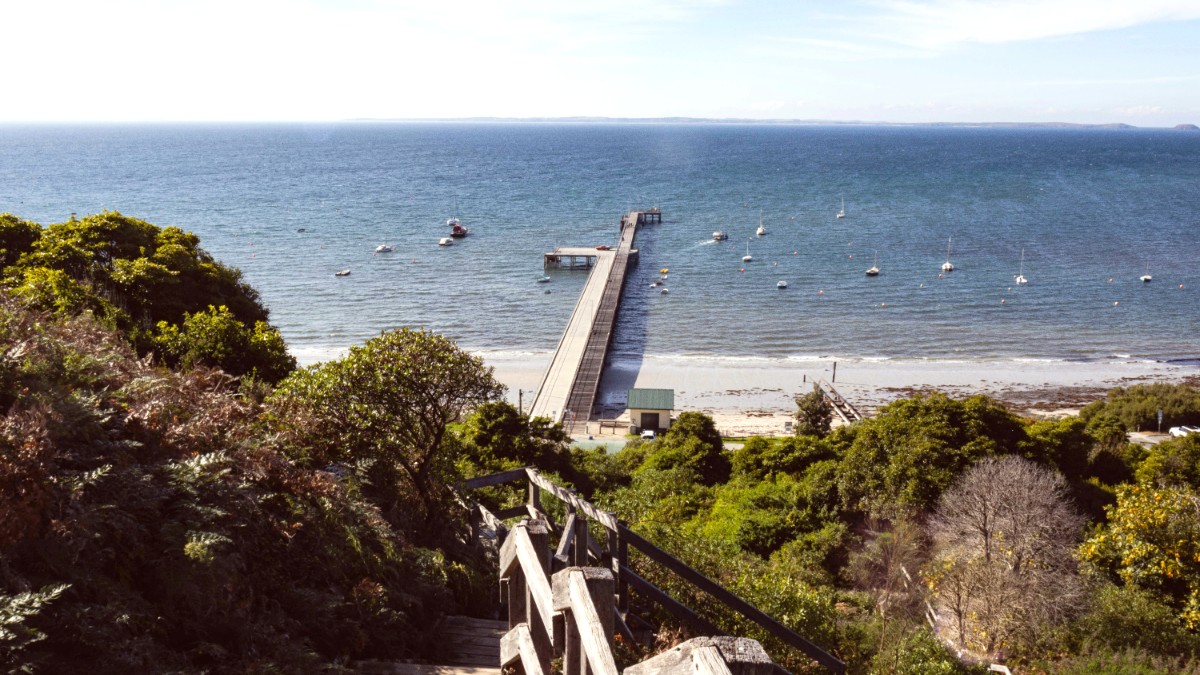
Victoria, Australia
The Mornington Peninsula's history goes back tens of thousands of years as the traditional lands of the Boon Wurrung/Bunurong people, part of the Kulin Nation. They lived sustainably on this rich land, using its abundant marine resources from the bays and oceans, and the fertile inland areas. Their bond to the land and waterways continues today, with many sites carrying deep cultural meaning. European settlement started in the early 19th century. This region became a farming and fishing area, with coastal towns growing into popular seaside resorts, drawing wealthy Melburnians for summer escapes. Grand holiday homes, known as "mansions," were built, creating the peninsula's reputation as a desirable retreat. In recent decades, the region changed, especially inland areas. The cool climate suited specific grape varieties, spurring vineyards from the 1970s onwards. This agricultural shift, with an increased focus on gourmet food production and wellness tourism, made the Mornington Peninsula the sophisticated and diverse destination it is today, mixing its rich past with modern attractions.
The Mornington Peninsula forms a distinctive boot shape, extending south-east from Melbourne into Port Phillip Bay. Its geography shapes much of its character and appeal. In 1802, Lieutenant John Murray explored Port Phillip Bay. Surveyor Charles Grimes followed in 1803, finding freshwater springs. Later that year, Lieutenant Colonel David Collins set up the first European settlement in Victoria at Sullivan Bay, near present-day Sorrento.
This attempt was brief, with settlers moving to Tasmania, but it is a significant point in Victoria's colonial history. The varying topography, from gentle bay shores to rugged ocean cliffs and inland hills, forms a diverse environment, a setting for a wide range of activities and experiences for visitors.
Over 50 cellar doors, specializing in Pinot Noir, Chardonnay, and Pinot Gris, many with exceptional dining. Coastal areas range from calm, family-friendly bay beaches like Dromana and Rosebud to rugged, surf-pounded ocean beaches like Gunnamatta and Cape Schanck. Natural thermal hot springs present opportunities for relaxation and spa treatments. A "farm-to-table" ethos here, with numerous farm gates, artisanal producers, and renowned restaurants. Mornington Peninsula National Park and Arthurs Seat State Park hold extensive walking trails, scenic lookouts, and wildlife encounters. Towns like Sorrento and Portsea keep their heritage, with limestone buildings and significant historical sites.
Self-driving works best for exploration, with flexibility for wineries, secluded beaches, and natural attractions. A weekend getaway is popular, but a 3-5 day trip leads to a more comprehensive experience, blending relaxation with exploration. Longer stays suit immersion.
For romantic getaways.
For safe beach holidays.
For culinary experiences.
For outdoor exploration.
For relaxation and rejuvenation.
The Mornington Peninsula mirrors Victoria's best offerings, all within easy reach of Melbourne. Its mix of natural beauty, culinary excellence, and diverse activities forms a memorable trip.
Wine tasting, beach visits, hot springs bathing, hiking, and exploring charming coastal towns are popular activities.
The peninsula is easily accessible by car from Melbourne, with a well-maintained road network.
This region presents a compact yet diverse array of experiences for all travelers.
The Mornington Peninsula is a popular destination for both short breaks and longer stays, with a food and wine scene and beautiful natural landscapes. Planning your visit, especially during peak times, brings great benefit.
The region is a great place to combine relaxation, outdoor adventure, and culinary delights.
Self-driving works best for exploring the diverse attractions.
3-5 days for a comprehensive experience, or a weekend break.
Wineries, hot springs, national parks, and coastal towns.
The Mornington Peninsula is a safe and welcoming destination. General precautions are still advisable, as with any travel.
Located at the start of the peninsula, a stop for local insights and maps.
Found midway along the bay, with information on local attractions and accommodation.
At the peninsula's tip, a source for ferry schedules and further regional travel.
Approx. 1 hour (70 km / 43 miles)
Approx. 1 hour 15 mins (85 km / 53 miles)
Approx. 1 hour 30 mins (100 km / 62 miles)